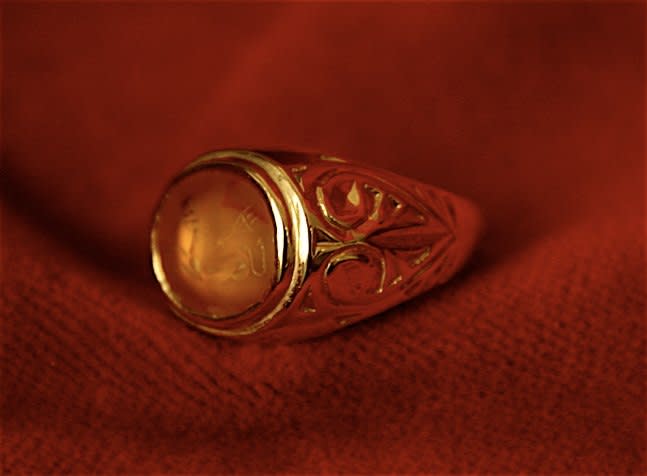Gold Ring Featuring a Roman Carnelian Intaglio Depicting a Seahorse, 100 CE - 300 CE
Carnelian and Gold
FJ.6803
Further images
This Genuine Ancient Seal Has Been Set in a Modern 18 Karat Gold Rin The art of glyptics, or carving on colored precious stones, is probably one of the oldest...
This Genuine Ancient Seal Has Been Set in a Modern 18 Karat Gold Rin
The art of glyptics, or carving on colored precious stones, is probably one of the oldest known to humanity. Intaglios, gems with an incised design, were made as early as the fourth and third millennia B.C. in Mesopotamia and the Aegean Islands. They exhibit a virtuosity of execution that suggests an old and stable tradition rooted in the earliest centuries. The tools required for carving gems were simple: a wheel with a belt-drive and a set of drills. Abrasives were necessary since the minerals used were too hard for a metal edge. A special difficulty of engraving intaglios, aside from their miniature size, was that the lapidary master had to work with a mirror-image in mind.
The image of a seahorse has been carefully engraved onto the polished surface of this precious gemstone. A trident, the symbol of the god of the sea Neptune, rises from the back of this animal and signifies this creature is a seahorse. The creature’s lack of hind legs solidifies this identification. In Classical mythology, Neptune is often depicted riding a chariot pulled by seahorses. The seahorse is one of the most unique creatures on the planet, on sea or land. This creature is the only known species in the world where the male gives birth to their offspring. The seahorse has fascinated coastal dwelling civilizations since the dawn of history. They are found in the mythology, legends, and folklore of almost every coastal region around the world. In China, seahorses are still prized for their medicinal values, believed to be a cure for anything from respiratory disorder to impotence. This ring is an ancient tribute to this majestic creature that has fascinated mankind for centuries. Here, the animal is depicted as the servant of the god Neptune, an appropriate duty for this wonder of the sea.
The art of glyptics, or carving on colored precious stones, is probably one of the oldest known to humanity. Intaglios, gems with an incised design, were made as early as the fourth and third millennia B.C. in Mesopotamia and the Aegean Islands. They exhibit a virtuosity of execution that suggests an old and stable tradition rooted in the earliest centuries. The tools required for carving gems were simple: a wheel with a belt-drive and a set of drills. Abrasives were necessary since the minerals used were too hard for a metal edge. A special difficulty of engraving intaglios, aside from their miniature size, was that the lapidary master had to work with a mirror-image in mind.
The image of a seahorse has been carefully engraved onto the polished surface of this precious gemstone. A trident, the symbol of the god of the sea Neptune, rises from the back of this animal and signifies this creature is a seahorse. The creature’s lack of hind legs solidifies this identification. In Classical mythology, Neptune is often depicted riding a chariot pulled by seahorses. The seahorse is one of the most unique creatures on the planet, on sea or land. This creature is the only known species in the world where the male gives birth to their offspring. The seahorse has fascinated coastal dwelling civilizations since the dawn of history. They are found in the mythology, legends, and folklore of almost every coastal region around the world. In China, seahorses are still prized for their medicinal values, believed to be a cure for anything from respiratory disorder to impotence. This ring is an ancient tribute to this majestic creature that has fascinated mankind for centuries. Here, the animal is depicted as the servant of the god Neptune, an appropriate duty for this wonder of the sea.







